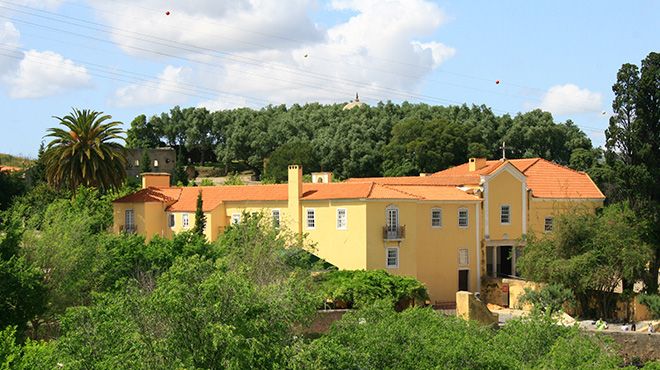Loures

Loures
Towns and Villages
In the outskirts of Lisbon, the Loures region is traditionally known as the saloia (country) area, because the gardens that used to supply the city of Lisbon with vegetables and fresh produce were situated here.
From the former times when it was in demand as an area of leisure, and the nobles built their residences here, the 18th century palace and estate of the Correio-Mor (Postmaster-General) and the estate of the Conventinho (small convent), now the premises of the Municipal Museum, still survive.
There are several important architectural buildings in the surrounding area, such as the Parish Church of Odivelas, built in the 13th century and rebuilt in the 17th, and in Santo Antão do Tojal there is the 18th century Palace of the Archbishops, which has a monumental fountain inset in its façade, in front of which there is a lively 18th century fair at the end of September.
Also in Loures council, the Demarcated Winegrowing Region of Bucelas produces excellent quality white wines, which achieved international renown after the Napoleonic invasions of the 19th century, although they had already been mentioned by Shakespeare in the 16th-17th centuries. All the ethnographic tradition associated with it is celebrated every October at the Festival of Wine and the Grape Harvests.
From the former times when it was in demand as an area of leisure, and the nobles built their residences here, the 18th century palace and estate of the Correio-Mor (Postmaster-General) and the estate of the Conventinho (small convent), now the premises of the Municipal Museum, still survive.
There are several important architectural buildings in the surrounding area, such as the Parish Church of Odivelas, built in the 13th century and rebuilt in the 17th, and in Santo Antão do Tojal there is the 18th century Palace of the Archbishops, which has a monumental fountain inset in its façade, in front of which there is a lively 18th century fair at the end of September.
Also in Loures council, the Demarcated Winegrowing Region of Bucelas produces excellent quality white wines, which achieved international renown after the Napoleonic invasions of the 19th century, although they had already been mentioned by Shakespeare in the 16th-17th centuries. All the ethnographic tradition associated with it is celebrated every October at the Festival of Wine and the Grape Harvests.




 Explore
Explore 
 Remember and Share
Remember and Share 


